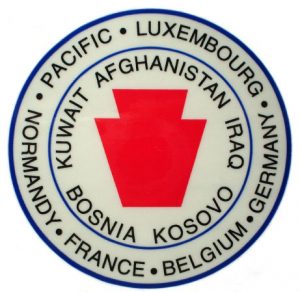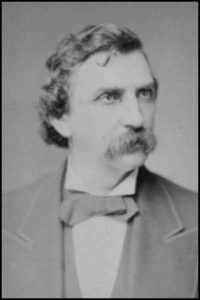Civil War Echoes: The Keystone Division

The Pennsylvania National Guard’s 28th Infantry Division is the oldest division in the United States Army. It’s formation was the result of Civil War veterans, and (like many National Guard units) it is an echo of the Civil War.
The division was formed on March 12, 1879, when Governor Henry Hoyt, a Civil War veteran, named Major General John F. Hartranft to command the National Guard of Pennsylvania, which would henceforth be organized into a complete division. Hartranft was Hoyt’s predecessor, and had commanded the 51st Pennsylvania at Antietam, and later led the division that repelled the Fort Stedman attack in 1865.

Nicknamed the Keystone Division, it incorporated units that descended from colonial militia and several Pennsylvania regiments from the Civil War – notably the 46th, 71st, and 79th among others. This meant the division and its component units carried streamers on their flags from virtually every major campaign in the Eastern and Western Theaters.
Annual training often emphasized lessons from the Civil War, taught by officers and NCOs who were veterans of the war. At least twice, the division did their annual encampment at Gettysburg – in 1884 and 1895, the first time on the land of Pickett’s Charge and the second further south.
The Keystone Division mobilized for the War with Spain, and later served in both World Wars as the 28th Infantry Division. The unit picked up two nicknames along the way: General John Pershing called the 28th the “Iron Division” because of its performance in World War I; Germans in World War II nicknamed the division “Bloody Bucket” because of its red patch. The 28th deployed to Germany during the Korean War and later performed peacekeeping roles. Elements of the division deployed several times to Iraq, and the 28th remains active today.
One other major 28th Division tie to the Civil War occurred after World War II, when Major General Edward J. Stackpole commanded the 28th Infantry Division 1946-47. In his retirement he wrote several books on the Civil War, including campaign studies of Fredericksburg, Chancellorsville, Gettysburg, and the Wilderness. His name also graces a publishing house based in the Keystone State.
I’ve always like Hartranft, even if his last name is tough to pronounce. His men did the first digging for the earthworks at Stevenson Ridge.